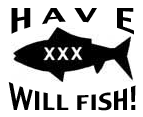
The Saltwater Magazine for Gulf Coast Fishing!
FISHING FORECASTS | FISHING CALENDARS | ARTICLES | SUBSCRIBE
Search Gulf Coast Fisherman's
Web Site
Past articles, specific
places or fish, etc.

Capsizing Off Clearwater:
A Preventable Tragedy
by David McGrath

Author made his reef anchor with rebar & conduit...
The capsizing of a 21 foot fishing boat which took the lives of three men, including two professional football players, would never have happened, if only they had been using a reef anchor.
Marquis Cooper, a linebacker for the Oakland Raiders, and Corey Smith, former NFL defensive lineman, went fishing for amberjack 50 miles offshore from Clearwater, FL, on February 28th, with their friends William Bleakley and Nick Schuyler-both University of South Florida football players.
At the end of their fishing day, when the men decided to head back in, they discovered that their anchor was wedged in the sea floor a hundred or so feet below. The men could not free it manually, at which point they fastened the anchor rope to the transom and attempted to motor forward and power it out. But the anchor held, essentially jerking the rear portion of the vessel beneath the surface. The boat rapidly filled with water and flipped over.
The overturned craft remained buoyant, and all four men clung to the hull in increasingly rough waters. But over the next 24 hours, one by one, they succumbed to hypothermia in the 64 degree water, and drifted away. Only Schuyler survived long enough to be rescued by the Coast Guard.
Likely the type of anchor they were using, was one of a handful commonly available and sold by boat dealers and marine supply retail outlets, which are safe enough in calms seas with clean bottoms, but which are very dangerous in deep, rough water over artificial reefs, such as the wrecks and other structures submerged off Florida's west coast.
Fluke, grapnel, plow, mushroom, or claw are names for the five most popular types of anchors available through boat and marine supply companies. The problem for the four young men, and for any other boater, is that all of these anchors are designed for setting or "sticking" in the sea floor, but not for "un-sticking" or easy disengagement.
A reef anchor, however, has flexible prongs which, when stuck, can bend free with a reasonable amount of force, more than enough of which could have been brought to bear by any single one of the athletes.
Manufactured reef anchors with aluminum prongs can be purchased for around one-hundred dollars. But many experienced fisherman fashion their own, using bendable prongs made from rebar-3/8th inch diameter iron rods, used for reinforcing concrete-and stuffed inside a short length of electrical conduit. That way, even if such an anchor were to get wedged in a wreck or logs or other debris, there would be no hesitation about cutting the line and sacrificing an anchor that costs less than ten dollars.
Even with this custom made device, anchoring requires care and caution. In some ways, it is even more dangerous than if a swimmer in deep water had a lead ball and chain shackled to his ankle.
You are trying to secure a boat that may weight 2,000 pounds or more, with a rope and a heavy piece of metal in depths 100 feet or more, with a world of water between. The physical forces involved, combined with powerful wave action, require a rope 7 times as great as the depth in which you're anchored, in order to ride the waves evenly (700 feet for 100 foot depth). Anything less, and the bow will pull seaward with tremendous force, slamming hard against each swell, rather than porpoising smoothly. The dangerous pitching increases when it's time to sail home and pull in the anchor, shortening the rope. Add to that an engine under power along with the boat's weight and momentum, and you have a formula for fatal consequences, when the anchor doesn't give.
In the U.S., there are, on average, 500 deaths each year resulting when small boats (mostly 21 feet or less) are swamped in fresh or saltwater, according to the NTSB. A majority of those victims were not wearing personal floatation devices, and an untold number die or are injured as a result of unsafe anchoring.
What lesson can be learned from the Clearwater tragedy?
Any private or for-hire vessel, planning to anchor offshore, should carry a reef anchor on board.
The terrible loss of these three men in the prime of their lives, is a devastation to their families, to the boating and fishing community, and to us all. Spreading the word about reef anchors can prevent similar tragedies in the future, and save countless precious lives.
David McGrath is a freelance writer and fisherman in Port Charlotte,
FL. Email him at profmcgrath2004@yahoo.com.
